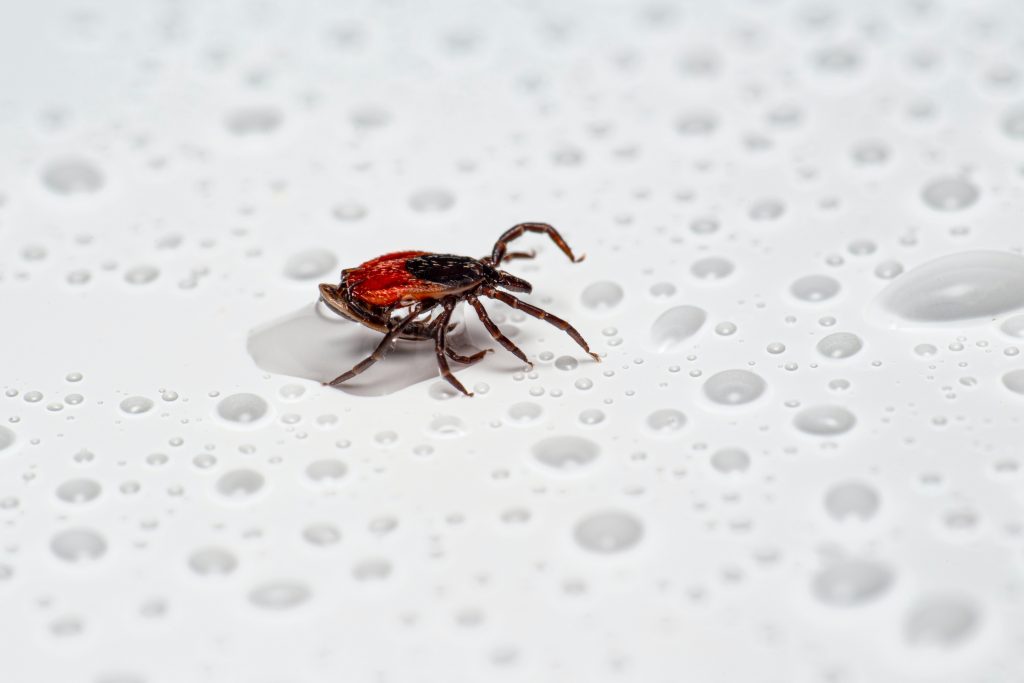
Posts by:
Dr. Mike Paul, DVM
Dog Checkups & Preventive Care
There are very few things with a greater “Yuk factor” than an attached and feeding tick on your dog (or even yourself). While so called “seed ticks” are quite small, they are quick to grow after they attach and begin to feed on the blood of their new host. In a relatively short period of time they can engorge to the point where they reach the size of a raisin or small grape.
Once attached, ticks almost immediately begin to drink blood and at the same time digestive fluids and anticoagulants from the tick begin to enter the host. These fluids carry a number of infectious diseases from the mouth parts into the host.
As I have discussed in the past, ticks are a potential source of infection for a number of diseases. There is a good deal of controversy about how long it takes for these organisms to cross into the new host, but the Companion Animal Parasite Council says it can happen in a very short time.
What NOT to do to remove a tick
You might already have heard about some tick removal methods that are not safe, and I’d like to dispel some dangerous methods. Years ago, some people would apply a lit cigarette or a quickly extinguished, but still hot, match head. Some used a pin that had been heated in flame. Please don’t. Nothing as dramatic or potentially painful as these methods is necessary. The CDC warns against “folklore remedies” for people, and those same warnings are true for dogs.
How to remove an attached tick safely
Attached and feeding ticks are not mobile and can be grasped rather easily using small thumb forceps. Grasp the tick as close to the host’s skin as possible and gently pull the tick away from the skin. It was once believed that the removal was easier if the direction of traction was counter clockwise (or is it clockwise), but ticks do not have threaded mouth parts and you should actually pull straight out.
If thumb forceps are not available, you can use a variety of tick extractors that slip around the mouth parts and allow removal with no contact. Remember, the longer a tick is attached, the greater the chances of disease transmission. That means if ticks do become attached they should be removed as quickly as possible.
While extracting an attached tick is technically quite simple (as outlined above), the removal of the tick should be performed with care. When removing a tick:
- Don’t squeeze—Avoid any further transmission caused by squeezing and expressing the body of the tick
- Get it all—Grab the tick as close to the mouth as possible to avoid leaving the tick’s head or mouth in the skin (this may lead to an infection)
What should you do after the tick is removed?
After the tick has been removed, drop the tick into a bottle containing rubbing alcohol or flea and tick spray. Alternatively the tick can be squashed, but it is very important to avoid contact with the tick’s body fluids and this eliminates the ability to identify the tick later.
Wash your hands thoroughly to avoid infection and record the date the tick was removed
Next, use a mild disinfectant at the attachment site, and a topical antibiotic ointment to prevent infection (particularly if you were unable to remove the mouth parts of the tick). If the area becomes inflamed or develops a rash, be sure to call your veterinarian.
Watch your dog closely for:
- Joint discomfort
- Joint swelling
- Limping
- Fever
- Listlessness
- Inappetence
- Swollen lymph nodes
Should any of these signs develop, see your veterinarian. Follow these links to learn more about the symptoms of:
- Lyme disease
- Ehrlichia
- Anaplasma
Also, see the common tick diseases in your area.
To prevent future ticks from attaching, talk to your veterinarian about tick prevention products.
Stopping ticks before they attach
The surest way to avoid infections is to avoid the attachment and feeding of the tick. The best way to control tick infestations is to use products that repel and kill ticks, ideally before they have a chance to attach and feed. However, tick repellents vary in their efficacy and speed of activity. Even the best available products may still allow ticks to attach to your dog. The Humane Society of the United States says, “A good tick prevention strategy includes checking all family members, especially after outdoor activities in wooded, leafy or grassy areas.”
Whenever your dog has had potential exposure to ticks it is important to thoroughly check your pet for ticks that may or may not have already attached.







